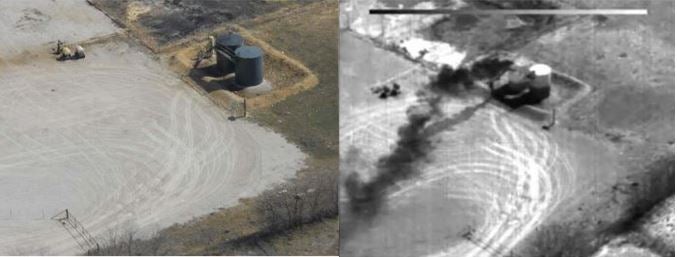 California’s oil and gas industry emitted approximately 270,000 tons of methane in 2014 – nearly three times the gas released during the Aliso Canyon storage facility disaster. This wasted methane – primarily natural gas – is worth over $50 million, and would have met the heating and cooking needs of about 400,000 homes in the state, had it not been lost to the atmosphere.
California’s oil and gas industry emitted approximately 270,000 tons of methane in 2014 – nearly three times the gas released during the Aliso Canyon storage facility disaster. This wasted methane – primarily natural gas – is worth over $50 million, and would have met the heating and cooking needs of about 400,000 homes in the state, had it not been lost to the atmosphere.
Notwithstanding the fact that methane pollution damages the climate and co-pollutants can cause dramatic public health problems, losing natural gas is a wasteful practice. However, as demonstrated during a 2-day joint agency symposium in Sacramento earlier this month, there are businesses that are ready, willing and able to help the state reduce leaks by deploying cutting edge technology, many of which are based in California.
Innovative solutions on display
The symposium featured companies, like United Electric Technologies, Safety Scan, Rebellion and Heath Consultants, that showcased technologies and capabilities being used today to reduce methane emissions across the U.S. in the area of oil and gas production, transmission, and natural gas storage.
At the same time, ARPA-E of the U.S. Department of Energy, EDF, the Pipeline and Hazardous Materials Safety Administration, and others highlighted where this technology is going – with smaller, faster, cheaper, more versatile, and more precise instruments entering into the market at breakneck pace.
And in the area of natural gas utility system leak detection, companies like Los Gatos Research, Picarro, Enview and several others demonstrated how new technologies can improve traditional integrity management systems, helping companies to cut costs and better predict where investments can achieve the highest level of safety and environmental improvement.
California’s efforts need a strong backbone
With solutions available and growing, California is in the midst of a regulatory overhaul to cut methane emissions from the oil and gas sector. This includes proposed regulations at the Air Resources Board (CARB) and proposed Best Practices recently released by the Public Utilities Commission (CPUC).
Unfortunately, though not unsurprisingly, these efforts face stiff opposition as oil and gas companies push back against stringent leak detection and repair rules.
For example, as a result of industry pressure, the recent rule draft by CARB for oil and gas production leaves a serious loophole. By allowing operators to inspect less when they find fewer leaks, CARB’s proposal creates a powerful and perverse incentive to avoid finding and reporting methane leaks, and a baked-in reason to avoid fixing them quickly. Strengthening the proposed rule to require permanent quarterly inspections will help prevent leaks before they do damage to public health and the environment.
Similarly at the CPUC, some major gas utilities have pushed back against a requirement to use cutting-edge leak detection equipment, including those highlighted during the symposium, to survey distribution systems, even though this equipment can find small leaks faster than current methods. This equipment and the data it produces allows utilities to engage in better integrity management, predictive modelling and workforce deployment – practices that can reduce costs, and improve safety and environmental performance, across the board.
Cost effective opportunities
To ensure CARB and the CPUC stay strong and implement rules that eliminate waste and protect communities and the environment, a look at the economics of methane abatement is key.
Concerns about costs and feasibility raised by industry opponents seeking weaker standards simply don’t hold water – especially when dozens of companies are ready to do the work that California needs to protect its environment and communities.
Studies have found that we can significantly reduce oil and gas methane pollution for only around one penny per Mcf of natural gas. And with leaks responsible for approximately 50 percent of all methane emissions, reducing this pollution through commonsense measures like leak detection and repair, is among the most cost effective steps we can take today to cut energy waste.
Strong rules make good business sense, and additional economics make the case even better
Quarterly leak inspections and rigorous best practice standards for oil and gas operations stimulate gas savings, new business models, and better investment decisions. However, at the root of each cubic foot of gas saved is the pollution that otherwise would have gone into communities – emissions that produce smog and contribute to climate change.
Rules to reduce methane pollution from the oil and gas industry simply make sense, for our communities, such as those in Los Angeles whose health and well-being is impacted by oil sites located near their homes, schools, and playgrounds, and for our world, as the methane pollution from California’s oil and gas infrastructure helps to accelerate the worst impacts of climate change.
For the sake of our economy, our health and our planet, the state needs finalize the strongest standards possible that make use of newly available technologies to cut methane pollution.









